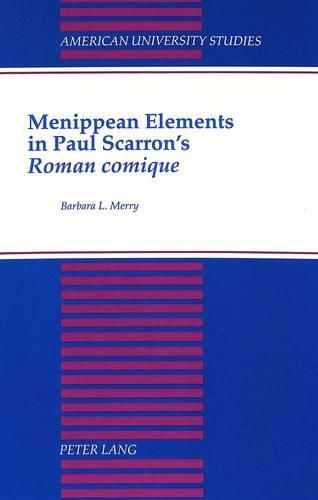Readings Newsletter
Become a Readings Member to make your shopping experience even easier.
Sign in or sign up for free!
You’re not far away from qualifying for FREE standard shipping within Australia
You’ve qualified for FREE standard shipping within Australia
The cart is loading…






This work evaluates the influence of Menippean satire on the seventeenth-century French novel and specifically studies its role in the Roman comique. The analysis uncovers many links to Menippean satire. Among these: digression; an unreliable narrator; parody; doubling; double-voiced discourse, dialogism (in Bakhtin’s terminology) and the oral nature of the tale told. While it may be impossible to prove that Scarron consciously imitated the Menippean writing of antiquity exemplified by the works of Varro, Seneca, Petronius, Lucian or Apuleius, or the Satyre Menippee of 1594, Scarron manifestly participates in the displacement of interest toward anti-conventional, anti-novelistic and parodic strategies that later become a central element in the history of the novelistic genre.
$9.00 standard shipping within Australia
FREE standard shipping within Australia for orders over $100.00
Express & International shipping calculated at checkout
This work evaluates the influence of Menippean satire on the seventeenth-century French novel and specifically studies its role in the Roman comique. The analysis uncovers many links to Menippean satire. Among these: digression; an unreliable narrator; parody; doubling; double-voiced discourse, dialogism (in Bakhtin’s terminology) and the oral nature of the tale told. While it may be impossible to prove that Scarron consciously imitated the Menippean writing of antiquity exemplified by the works of Varro, Seneca, Petronius, Lucian or Apuleius, or the Satyre Menippee of 1594, Scarron manifestly participates in the displacement of interest toward anti-conventional, anti-novelistic and parodic strategies that later become a central element in the history of the novelistic genre.